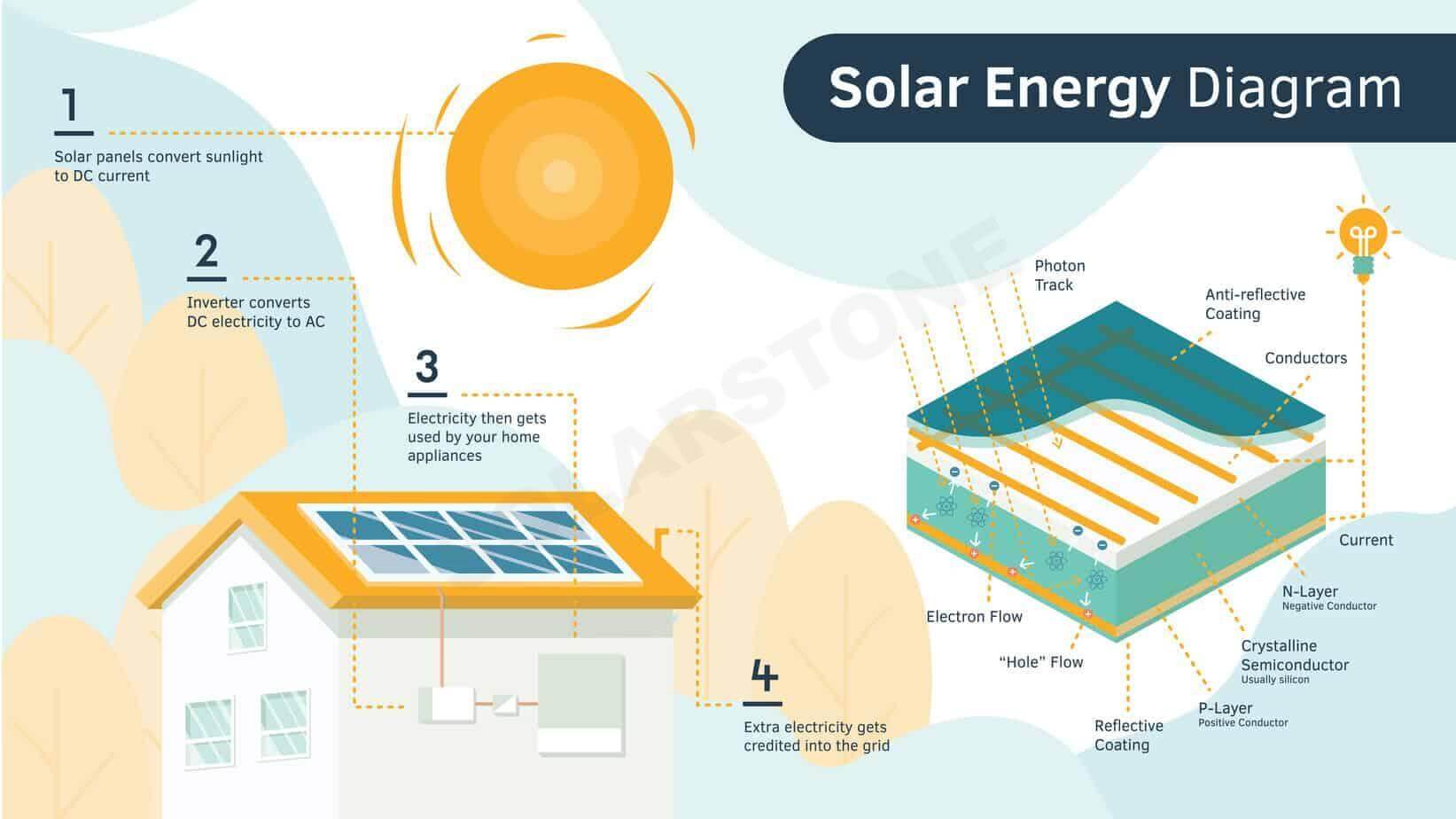People have been trying to harness the energy of the solar until 1839, when Edmond Becquerel, a French physicist, invented photovoltaic cells. This enables people to use solar energy more. Since then, solar photovoltaic technology began a long development.
Nowadays, the cost of solar panels is declining. Manufacturers continue to launch innovative products. They include portable solar panels, folding solar panels, flexible solar panels, solar roof tiles, solar emergency products, solar chargers, solar backpacks, solar lights, transparent solar PV windows, etc. These innovations have brought great changes to the whole photovoltaic industry. Now, whether you live in a modern city or remote countryside, you can use solar panels to reduce your electricity bill.
So, when using solar panels, have you ever thought about how they work?
Here we will talk about it in 4 aspects:
1.What is solar panel?
The solar panel is composed of solar cells, which can convert the solar energy in the sunlight into electric energy. Solar cells can generate electricity from the sun. It is the most reliable power generation technology we have now, which is why solar cells are used in space and in some remote areas.
2.How do solar panels work?
Solar cells are made up of silicon atoms. They’re about the same diameter as our dinner plates. They’re extremely thin and only three times thicker than our hair.
To turn the silicon layer into a solar panel requires a special preparation process. First of all, we need to heat the silicon layer to 1000 degrees Celsius, and then place a layer of metal sheet on the back. At the same time, we need to cover the solar cell with a layer of metal mesh, which needs holes and faces the sun.
When several solar cells are finished, they will be fixed on a layer of glass to make solar panels. Generally speaking, installers will install 10 to 50 solar panels on the house roof, which form a small home solar system to meet the needs of household power supply. But in large-scale solar power plants, we will install a large number of solar panels to meet the needs of different users, including: factories, commercial buildings, schools, hospitals and so on.
Every silicon atom contains electrons, which are very small and light. When sunlight falls on a solar panel, it hits one of the electrons and takes it out of its orbit. The hit electrons can move, but the special structure of the battery makes the electrons move only in one direction towards the sun.
So when the sun falls on the solar panel, many electrons will break away from their orbit and become free electrons. Because of the characteristics of solar cells, electrons can only move upward, thus generating the current that can drive household appliances.
The more sunlight falls on the solar panel, the more electrons will be knocked out of their orbits, and the greater the current. If the weather is not good and the sunlight is not enough, the number of impacted electrons will be reduced, which will greatly affect the production of batteries, and may even be reduced to 75% of the previous level. At night, solar panels don’t generate any power, and the power supply depends on the battery or other power sources.
3.How do we use solar panels?
Solar panels are the cheapest way to generate electricity – even cheaper than a new thermal or nuclear power plant. That’s why the global installation rate of solar panels is five times that of coal-fired power and 20 times that of nuclear power.
In Australia, new power stations are solar or wind power plants. We can also use solar and wind power to heat and cool houses, replacing traditional coal and natural gas heating methods.
The use of solar energy and wind energy can help to reduce greenhouse gas emissions that cause damage to the earth. Compared with other energy sources, the cost of solar energy and wind energy is very low and will become lower; If we use more wind or solar energy, we can speed up the reduction of traditional energy use (such as coal, oil, and natural gas) that harms the earth.
Also, silicon is the second-largest atom in the world (the first is oxygen). Most of the sand and stones are made of silicon and oxygen, so we can’t use up all the silicon for making solar panels.
4.Do solar panels work in winter?
Many people have common thinking that solar panels don’t work in winter. But, low temperatures will increase the output power of solar panels. But solar panels are covered with snow in winter, which does affect power generation.
All solar panels can bear a certain weight. Generally, the snow is not too heavy, so it will not cause problems. Before leaving the factory, the solar panel will go through a pressure test to test the durability and quality level. The higher the pressure level, the better your solar panel can withstand the weight of heavy snow.
Solar panels need sunlight to generate electricity, so if your solar panels are covered with snow, they won’t generate electricity. Most of the solar panels are installed with a certain tilt angle, and the snow will fall by itself, but it will take a certain amount of time. You can also clean snow by making snow rakes (soft) or similar snow removal tools, which usually do not damage solar panels.
Low temperature, sunny weather is good for generating electricity. As long as the solar panels are not covered with snow, winter is conducive to power generation. Like most electronic products, solar panels are more efficient in cold conditions than in hot ones, making full use of every hour to generate electricity during the short period of winter and daytime.
Besides, you know, in fact, in Germany, the radiation level is like that in cold Alaska. For more than a decade, this European country has led the world in solar panel installation, and solar energy has also made a significant contribution to the improvement of its national energy structure.
In winter, the power generation of photovoltaic power stations is less, so there is no need to be nervous. This is a normal phenomenon because the length of sunshine in winter is smaller. But, due to the low temperature in winter, it is conducive to photovoltaic power generation and has a good protective effect on the service life. Also, we should pay attention to the maintenance of the power station in winter, and clean up the dust and snow.
Let’s use more solar panels, which can not only reduce our electricity bill but also contribute to the beautiful environment of the world.








